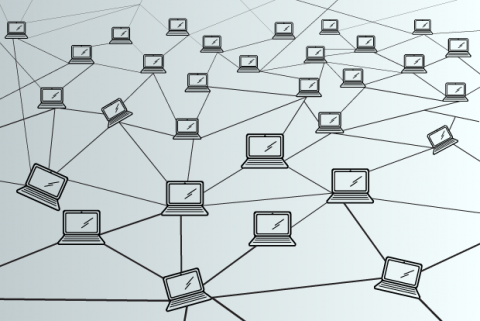In the early months of the pandemic, enterprises made quick decisions to maintain operations while protecting the health of their employees. New work-from-home policies made it possible for employees to stay connected, and this flexibility delivered unexpected benefits by allowing businesses to engage new employees in remote locations.
But while most enterprises have maintained or even increased productivity, the transition to remote work has proven challenging for relationship-building, networking, and company culture. Separated by thousands of miles and countless Zoom meetings, employees – particularly those in the early stages of their careers – have struggled to build connections in the disconnected workplace.
However, some best practices can reduce the metaphorical distance between remote employees. Here are four ways you can build connections within your workplace.
1. Equip your teams with the right tools
Distributed teams can now choose from hundreds of communication, collaboration, and productivity tools. Every enterprise has its unique processes and requirements, so there is no single best tool that can meet the needs of every company.
[ Also read 3 ways artificial intelligence can help unite remote teams. ]
To improve remote employees' teamwork and collaboration, analyze how your employees work and choose the tools that best meet those needs. A Slack or Teams channel could be the easiest way for some teams to facilitate asynchronous communication. For others, regular Zoom meetings could be the better choice to make crucial decisions together in real-time.
The goal should be to find the right combination of tools that supports your team’s unique style rather than try to adapt to the wrong solution.
2. Ensure your employees enjoy the work they’re doing
Employees must first connect to their work to connect to each other. Foster this connection by communicating the purpose and value of each project while simultaneously providing employees with the space they need to work and grow. Instead of devoting time to micromanaging each task, check in with your employees to ensure they’re excited and challenged by their work. If they’re not, prioritize finding a new project or switching employee tasks to ensure everyone is engaged.
[ Also read 5 tips for prioritizing the employee experience ]
3. Trust your employees to meet their goals
One of the goals of every enterprise should be to foster a culture of collaboration and entrepreneurship, and the best way to achieve this is to lead by example. Demonstrate a willingness to communicate and collaborate across the organization and build this collaboration on a foundation of trust.
Every employee at your enterprise was hired for a reason, and they must be able to trust and rely on their coworkers to meet their goals and move the business forward. In an organization where everyone can count on each other to pull their weight, it becomes easier to build connections and relationships within and across teams.
These relationships lead to long-term creativity and success: some close coworkers could develop a new product or service that will take the business to the next level or even go on to found a startup.
4. Make time for connections
For most enterprises, the transition to remote work didn’t disrupt the significant aspects of their operations or the work that keeps their business moving. Instead, small moments of growth and collaboration were lost: the minor issues or questions that don’t merit interrupting a Zoom call or sending a specific email.
These minor issues could be addressed quickly in person through a simple question or conversation. Still, the physical distance of remote work makes it more difficult to find these organic moments of collaboration.
[ Related read How to build connections in a hybrid work environment ]
To compensate for this loss of connection, institute processes or policies that make it clear to employees that they have time and space to bring up their questions or comments. Whether it’s company-wide virtual happy hours, dedicated Zoom meetings for small queries, or a virtual open-door policy for employees to connect with their managers, making time for these small interactions allows employees to take a more informal approach to growth and relationship building.
Hybrid work will look different for every organization. Rather than prescribing the “best” tools and approaches for remote work, consider how you can create the environment and culture that will allow your employees to do good work, build relationships, and take pride in their workplace. Establish the proper foundation, and the rest will follow.
[ Get exercises and approaches that make disparate teams stronger. Read the digital transformation ebook: Transformation Takes Practice. ]






